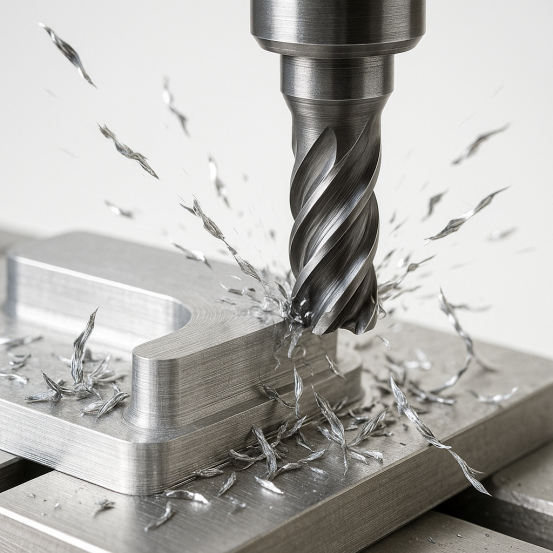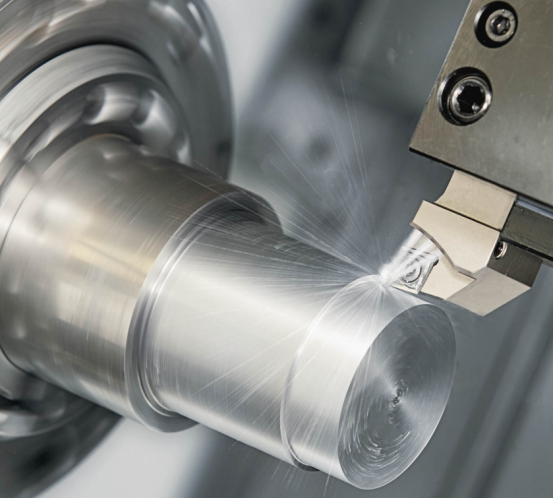AMS 4914 Alternative: Practical Metal Substitutes & CNC Machining Strategies
 Jul 04,2025
Jul 04,2025

AMS 4914—better known as Ti-15-3-3-3 beta-titanium sheet—delivers sky-high strength in paper-thin gauges. That makes it a darling for aerospace skins, UAV spars, and missile fairings. But let’s be honest: warm-forming headaches, long mill queues, and eye-watering quotes can quickly turn this hero alloy into a budgeting villain. In plain language, this article walks through the moments when AMS 4914 stops making sense, the metals that step in gracefully, and the shop-floor tricks that keep production on schedule and on budget.

What Is AMS 4914 Titanium
Before we start swapping alloys, it helps to know exactly what we’re leaving behind. AMS 4914 is a metastable beta-titanium with 15 % V, 3 % Cr, 3 % Sn, and 3 % Al. In its solution-treated & aged state the sheet posts 930–1 000 MPa tensile strength at a feathery 4.77 g / cm³.
Composition & Key Properties
Fine α precipitates add fatigue muscle, yet the beta matrix limits service to roughly 540 °C. Gauges top out near 3 mm, so the alloy shines whenever mass is public enemy #1.
Typical Applications
Think fuselage skins, UAV hinges, and inlet liners. In each case the alloy shaves grams, extends range, and passes aerospace certs without breaking a sweat.
Pros & Cons
Pros — stellar strength-to-weight, tidy fatigue curve, decent room-temperature bendability.
Cons — tight radii need warm forming, strength fades above 540 °C, raw metal costs ~50 % more than Ti-6-4, and 24-week lead times are common.
When Will You Need to Replace AMS 4914?
Even the best alloys have blind spots. If any of the scenarios below sounds too familiar, it’s time to shop for an AMS 4914 alternative.
Ultra-Tight Cold-Forming Below 1.5 mm
Room-temperature hat-sections often split on the bend line. Annealed Ti-6-4 or 17-4 PH bends to a 1 t radius without heat blankets, saving tooling and cycle time.
High-Heat Service Above 550 °C
Nacelle shields basking at 570 °C for hours see beta-titanium creep out of spec. Ti-8-1-1 or Inconel 625 keeps shape and strength where AMS 4914 simply can’t.
High-Volume, Cost-Sensitive Runs
Build 5 000 UAV frames a year and the premium metal price burns through the budget. 17-4 PH halves material cost, machines faster, and adds just 14 % weight—often a fair trade.
Property Checklist for a Viable Substitute
Swapping metal is easier when you grade candidates against the same rubric every time. We like the “Five F” test: Force-to-Mass (strength-to-weight), Fatigue, Formability, Furnace (heat-treat), and Field-Life (corrosion).
Strength-to-Weight & Fatigue
Look for ≥ 900 MPa UTS at ≤ 5 g / cm³ and a flat S-N curve past 107 cycles. If fatigue data is missing, walk away.
Formability & Weldability
Bend radius, forming temperature, and quick GTAW repairs can make or break production time on tight builds.
Heat-Treat Window
Verify your furnaces can hit solution temperature without new fixtures, and that the alloy keeps ≥ 80 % strength at service temp.
Corrosion & Oxidation
Hot-section skins want oxidation resistance; marine drones need pitting armour. Pick accordingly.
Titanium-Alloy Replacements (Weight-Neutral Options)
If you must stay near the same density, the three workhorses below are the usual suspects.
| Spec | UTS (MPa) | Elong % | Quick Note | Stock |
|---|---|---|---|---|
| AMS 4902 Ti-6-4 | 950 | 14 | All-rounder | Broad |
| AMS 4911 Ti-6-4 ELI | 895 | 15 | Cryogenic | Good |
| AMS 4916 Ti-8-1-1 | 1 000 | 10 | Hot skin | Limited |
AMS 4902 Ti-6-4 — Widely Stocked Workhorse
This alpha-beta alloy bends tighter, cuts 15 % faster, and usually costs 40 % less than beta-Ti. The trade-off is slightly lower toughness at cryogenic temps.
AMS 4911 Ti-6-4 ELI — Cryogenic Friendly
Extra-low interstitials bump fracture toughness by about 20 %. NASA uses it in LNG pumps and LOX valves where brittle failure is not an option.
AMS 4916 Ti-8-1-1 — High-Temperature Skin Choice
Holds ≥ 850 MPa at 600 °C. Perfect for turbine exhaust liners where Ti-6-4 starts to soften.
Stock & Cost Snapshot
Ti-6-4 sheet ships in 4–6 weeks. Ti-8-1-1 is niche—plan for special orders and bigger minimum buys.
Beyond Titanium: Stainless & Nickel Alternatives
Heavier, yes, but often cheaper or tougher against heat and corrosion.
AMS 5604 17-4 PH — Low-Cost High Strength
After the classic H900 age, 17-4 PH tops 1 200 MPa UTS. Raw metal is roughly half the cost of AMS 4914 sheet.
AMS 5510 15-5 PH — Balanced Toughness
Trades a bit of strength for better impact energy and cleaner welds. Common in flight-control fittings.
AMS 5599 Inconel 625 — Extreme Heat & Corrosion Shield
Laughs at seawater and keeps its shape at 800 °C. The penalty? Slow feeds and premium tooling.
Weight & Machining Trade-Offs
Stainless adds ~60 % weight; nickel alloys even more. Machining feeds drop, but raw metal and high-temperature performance improve. Balance is key.
Heat-Treatment for All Candidates
Furnace recipes vary, but mistakes are universal—overage, scale, and grain growth torch mechanical properties. Nail your cycle the first time.
Solution + Age Cycle for Beta-Ti
Run 790 °C for 15 min, air-cool, then age at 510 °C for eight hours. Anything hotter and strength drops like a stone.
Anneal vs STA for Alpha-Beta Ti
A full anneal at 955 °C boosts ductility. Add a 550 °C age and tensile strength climbs 12 %, though toughness dips a touch.
One-Step Aging for PH Stainless
17-4 PH loves the simple H900—482 °C for one hour. Single step, zero drama.
Stress-Relief for Nickel Alloys
Inconel 625 needs 870 °C in high vacuum (< 1 × 10⁻³ mbar) to clear machining stress without surface scale.
CNC Machining Strategies for Alternative Alloys

Feeds, speeds, and fixtures matter. Get them right and even cranky metals behave; get them wrong and tool life evaporates.
Cutting Data & Tool Coatings
Ti-6-4 likes 80–110 m / min with AlTiN carbide, 17-4 PH runs at 140–180 m / min under TiCN, and Inconel 625 pokes along at 25–35 m / min using SiAlON ceramics for roughing.
Workholding Thin Sheet & Strip
Vacuum grids plus peelable adhesive stop chatter in skins below 0.8 mm. A back-purge plate keeps heat in check during roughing.
Surface Integrity & Stress-Relief
Beta-titanium benefits from a gentle 150 °C bake to vent hydrogen and protect fatigue life. Stainless and nickel alloys usually skip this step.
End-to-End CNC Processing Workflow
Picking the alloy is half the game; dialled-in CAM templates, smart monitoring, and feedback loops win the match.
Digital Model & CAM Setup
Upload a material-aware feature tree and let the software fill feeds and speeds from an ISO-513 tool library—30 % faster programming right out of the gate.
High-Efficiency Toolpaths
Adaptive clearing doubles MRR in Ti-6-4, trochoidal milling calms 17-4 PH, and constant-engagement paths keep Inconel cutters under 800 °C.
In-Process Sensing & Adaptive Control
Spindle-load and acoustic-emission data tweak feeds in milliseconds, preventing chatter in thin skins and boosting tool life batch after batch.
Finishing & Verification
Automated deburr, vacuum stress-relief for beta-Ti, and 3-D CMM scans feed data back into CAM so the next lot starts closer to nominal.
Certification & Traceability Toolbox
Paperwork delays more flights than machining ever will. Get the docs right the first time.
Must-Have Docs
Mill cert, furnace chart, NADCAP audit summary, and a first-article inspection record—every part, every time.
Dual-Cert Material
AMS + ASTM stamps can shave weeks off delivery, but only if both specs cover the same heat-treat state. Double-check before cutting the PO.
First-Article & Export Codes
Assign EAR99 or ITAR codes during quotation. Last-minute changes trigger customs holds that dwarf any machining delay.
Conclusion – Picking the Right AMS 4914 Alternative
Run the chain: match the properties, confirm machinability, clear the certs, tally the true cost. If any link snaps, change the alloy. And if you’d rather skip the guesswork, TUOFA’s shop prototypes beta-titanium, PH stainless, and nickel superalloys every week—drop us a line before your next big quote.
FAQs
Can AMS 4914 bar replace sheet?
Almost never. Bar is annealed and lacks the flat-rolled grain direction—flatness and fatigue suffer.
Is Ti-6-4 always cheaper than Ti-15-3-3-3?
Raw metal runs about 40 % less, feeds are faster, and finished parts usually drop 20–25 % in price. Your mileage may vary, but the savings are hard to miss.
 Tel/WeChat:
Tel/WeChat:  Email:
Email: 
 Home
Home
 SKD11 Tool Steel: Properties, Heat Treatment & Machining Guide
SKD11 Tool Steel: Properties, Heat Treatment & Machining Guide 







